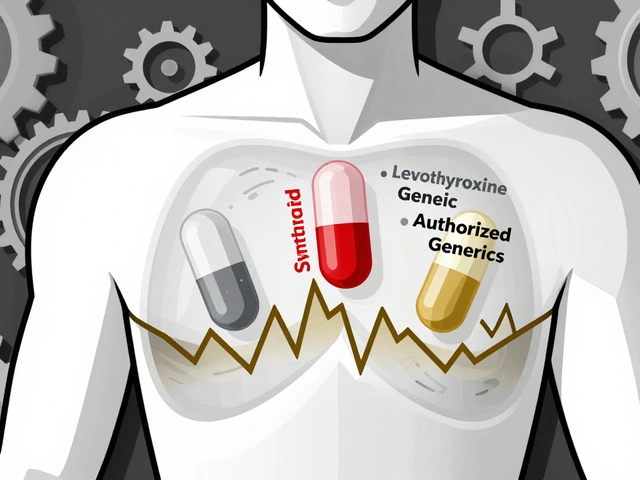Brand vs Generic Medications
When talking about Brand vs Generic Medications, the comparison between a company’s original product and its lower‑priced counterpart. Also known as brand‑name vs generic, this topic matters to anyone who picks up a prescription at the pharmacy. Brand vs generic isn’t just a buzzword; it’s a decision that can affect your wallet, your therapy outcomes, and even your confidence in a drug’s safety. Alongside the main comparison, you’ll often see related ideas like generic drugs, medicines that contain the same active ingredient as their brand versions but are sold under their chemical name, brand‑name drugs, original products marketed under a proprietary name and usually priced higher, and bioequivalence, the regulatory standard that ensures a generic works the same way as the brand. These entities weave together a story: the original brand creates the formula, regulators test the generic for bioequivalence, and consumers reap the cost savings.
One key attribute of brand‑name drugs is the extensive marketing push that often creates a perception of higher quality. In reality, the active ingredient is chemically identical to that in the generic, but the brand may have a unique filler, coating, or patented delivery system that can affect how quickly the drug dissolves. For most patients, those differences are clinically insignificant, especially when the generic meets the FDA’s bioequivalence threshold of 80‑125% of the brand’s peak blood concentration. This requirement is a direct link between the entities: bioequivalence ensures that generic drugs provide the same therapeutic effect as brand‑name drugs. The result is a dramatic cost reduction—generic versions can be 30‑90% cheaper, which translates into real savings for individuals and healthcare systems alike. Studies from the National Institutes of Health show that switching to generics saves billions of dollars annually, a fact that underscores why cost is such a powerful driver in the brand vs generic debate.
Beyond price, there are practical considerations you’ll encounter when deciding which option fits your routine. Some patients notice a slight difference in side‑effects due to inactive ingredients; this is why doctors may suggest trying a few generic manufacturers before settling on one. Others rely on brand‑specific delivery technologies, like extended‑release tablets, that aren’t always replicated perfectly in generics. Understanding these nuances helps you weigh the trade‑offs—whether you prioritize the lowest price, the most consistent experience, or a specific formulation. Below, you’ll find a curated list of articles that break down these factors for common drugs, guide you through safe online purchasing, and compare specific products side‑by‑side. Dive in to see how the concepts of brand and generic play out across real‑world scenarios, and equip yourself with the knowledge to make confident, cost‑effective choices.

ManForce (Sildenafil) vs Top ED Alternatives - Full Comparison Guide
Compare ManForce sildenafil with Viagra, Cialis, Levitra, Stendra and generic options. Find out efficacy, onset, duration, safety and price to choose the right ED treatment.
read more




